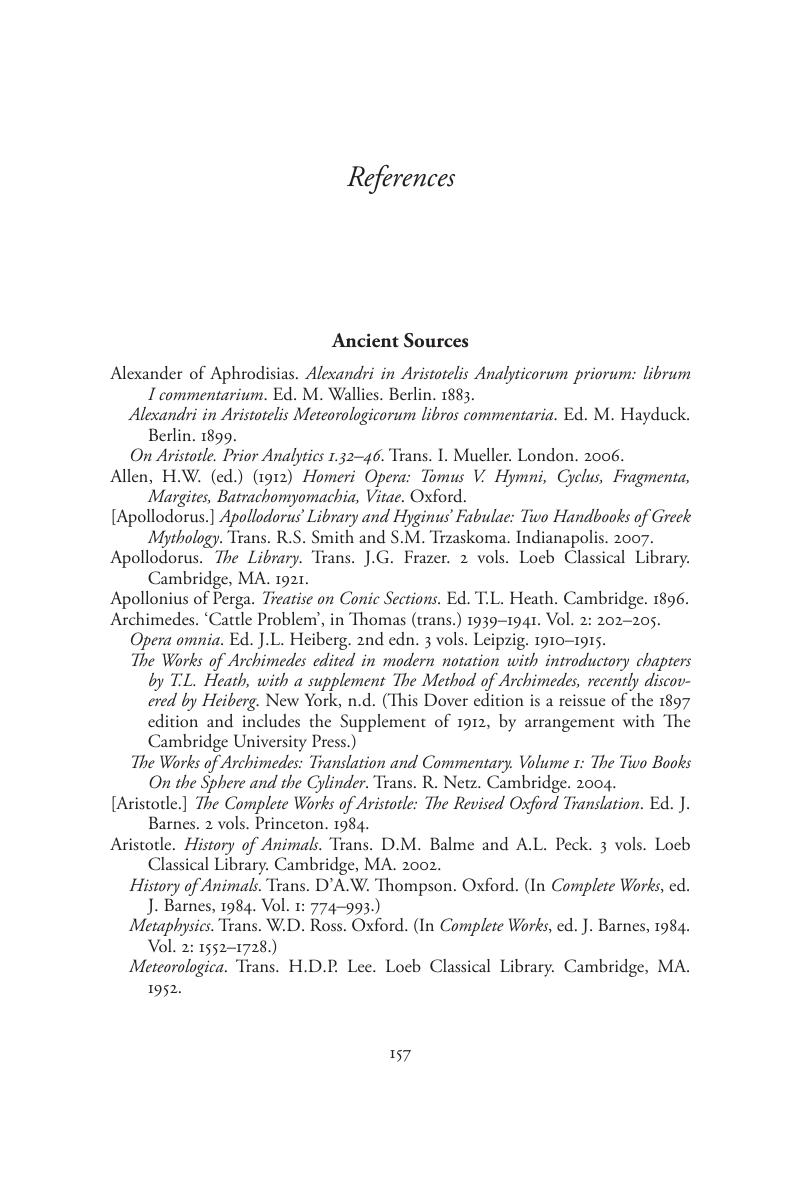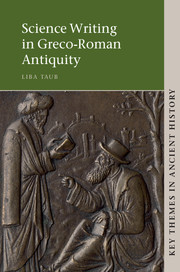Book contents
- Science Writing in Greco-Roman Antiquity
- Key Themes in Ancient History
- Science Writing in Greco-Roman Antiquity
- Copyright page
- Contents
- Illustrations
- Preface
- Acknowledgements
- Spelling and Abbreviations
- Introduction
- 1 Poetry
- 2 Letter
- 3 Encyclopaedia
- 4 Commentary
- 5 Biography
- Conclusion
- Book part
- Bibliographical Essay
- References
- Index
- References
References
Published online by Cambridge University Press: 20 April 2017
- Science Writing in Greco-Roman Antiquity
- Key Themes in Ancient History
- Science Writing in Greco-Roman Antiquity
- Copyright page
- Contents
- Illustrations
- Preface
- Acknowledgements
- Spelling and Abbreviations
- Introduction
- 1 Poetry
- 2 Letter
- 3 Encyclopaedia
- 4 Commentary
- 5 Biography
- Conclusion
- Book part
- Bibliographical Essay
- References
- Index
- References
Summary

- Type
- Chapter
- Information
- Science Writing in Greco-Roman Antiquity , pp. 157 - 180Publisher: Cambridge University PressPrint publication year: 2017



